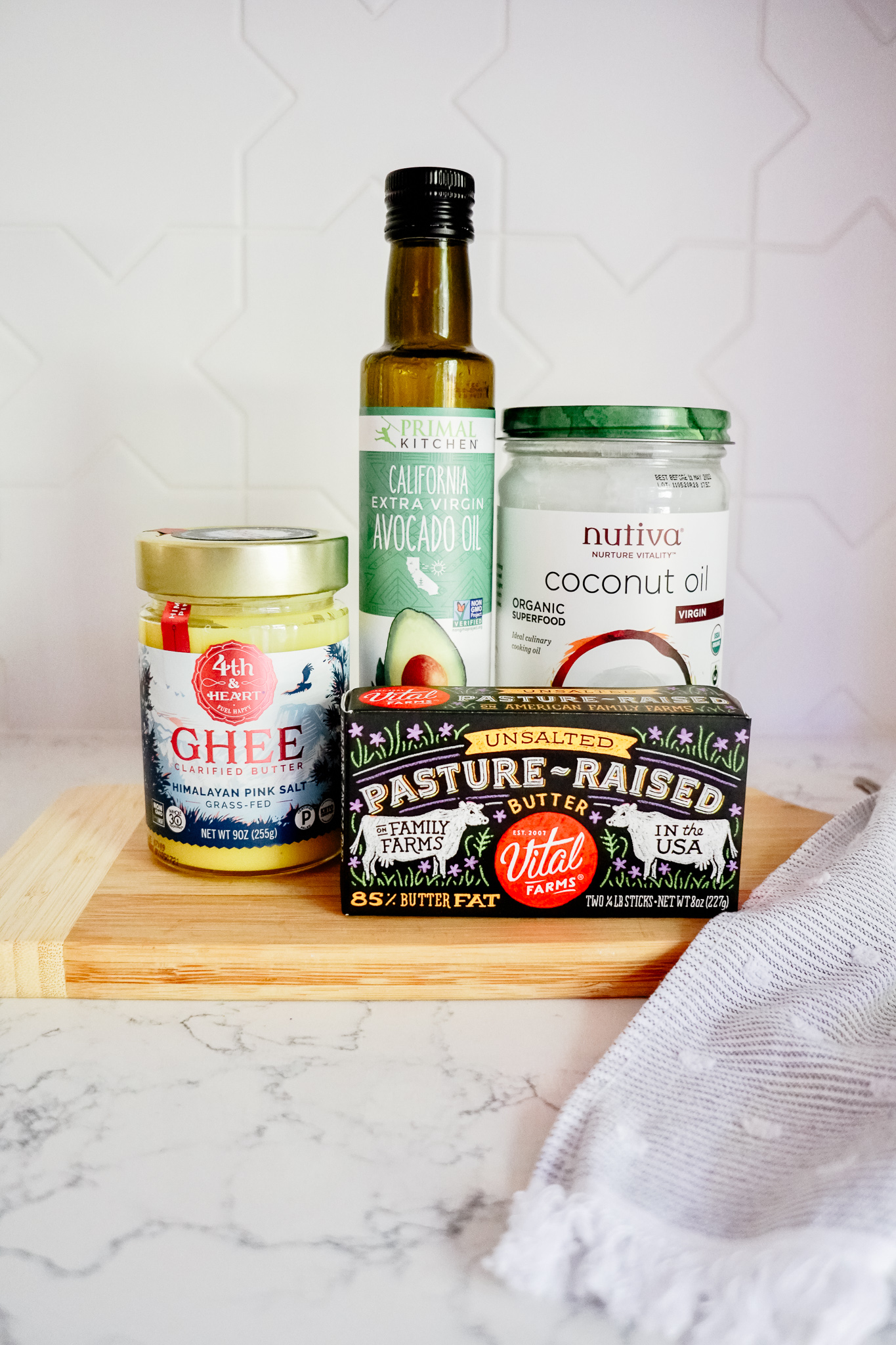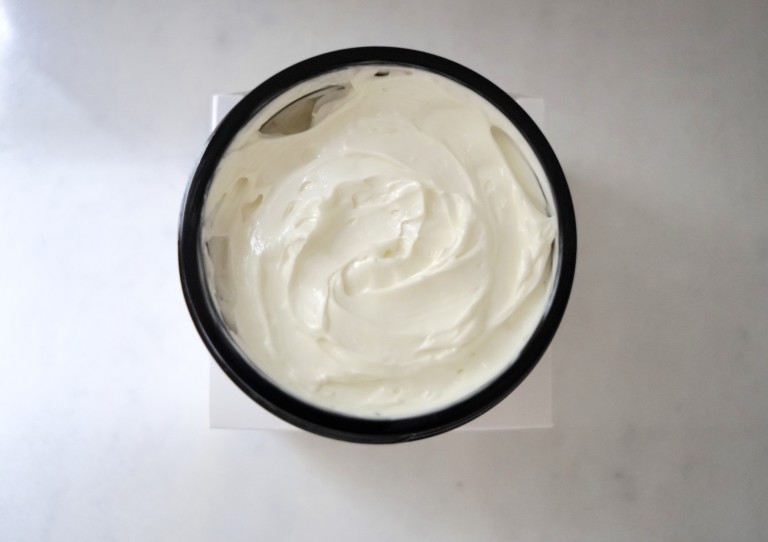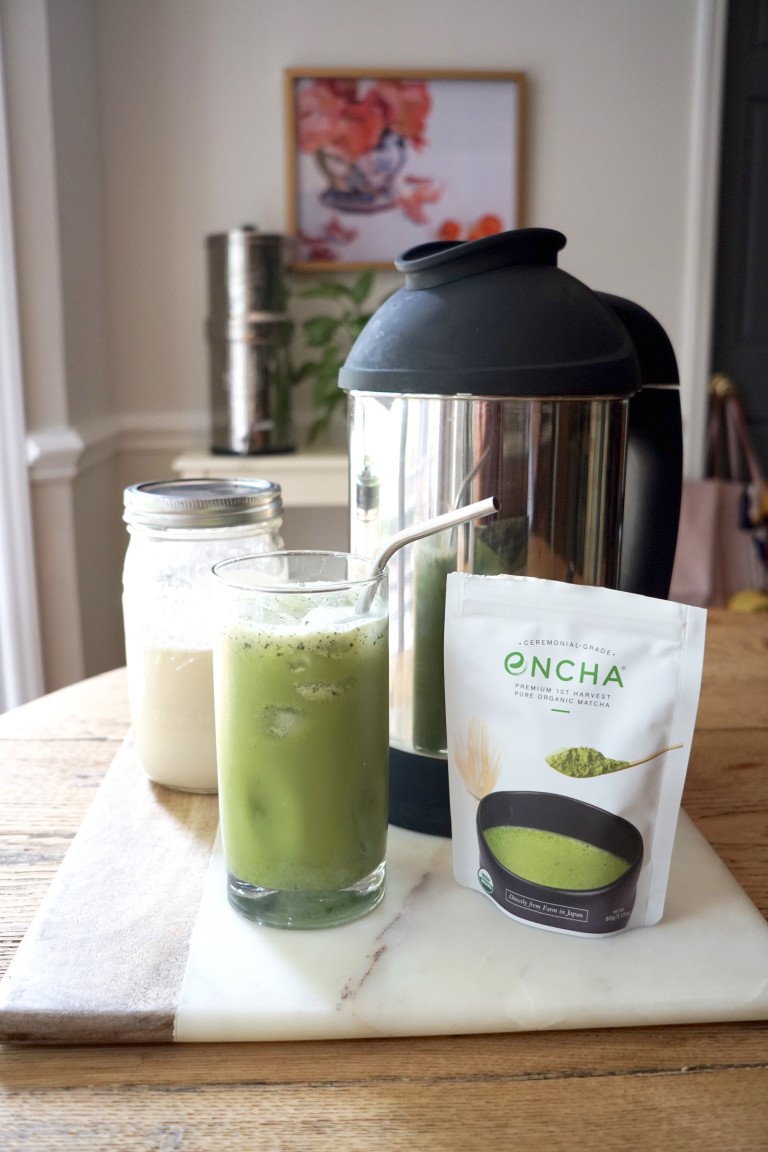Best & Worst Oils For Cooking: Pantry Detox

Welcome to the Pantry Detox Series! In this series, we’ll be taking a look at what’s in our pantries and then look at healthier swaps. We’re starting this series with the best and worst oils for cooking.
This is arguably one of the most important, yet overlooked, places in the kitchen. Cooking with the right oils can make our food more nutritious and healthier while cooking with the wrong oils can do the opposite and actually create inflammation, higher cholesterol, and other health issues. So before you fry that egg, let’s chat.
A Big Fat Controversy
If you were around in the 90s, you likely remember the no and low-fat craze. From low-fat snacks being marketed as health food to chips with fake-fat substitutes (one friend’s gross testimony of what happened when they ate Olestra chips was enough to make me never want to try them), the message was clear: fat was bad for you.
Of course, we now know that your body needs certain fats to stay healthy and keep your brain functioning, lower bad cholesterol, increase the bioavailability of essential fat-soluble vitamins, and even help keep you at a healthier weight. Yet some false messages about fats persist. Especially when it comes to which oils are healthy and which are not. We’ll go over the best and the worst oils for cooking below.

The Worst Oils For Cooking
Yes, even if they’re organic
Canola (also known as rapeseed or modified rapeseed oil)
Corn oil
Cottonseed oil
Peanut oil
Soybean oil
Safflower oil
Vegetable oil (which is usually a blend of some of the above)
Shortening
Margarine
Throughout history, vegetable oils weren’t a large part of our diet until around the turn of the 20th century when it became possible to use chemical solvents and other processes to more easily extract these oils. That was followed by a decade’s long campaign to villainize things like butter and instead offer these ultra-processed vegetable oils and margarine as “healthier” and cheaper options.
The problem is that vegetable oils contain a much higher amount of omega-6 fatty acids and polyunsaturated fats which not only oxidize quickly and create health problems, but our bodies were meant to consume a higher ratio of omega-3s than omega-6s . They are also highly processed, refined, sometimes chemically altered, and contain a lot of additives to keep them stable, among other things.
Eating a higher ratio of omega-6 fatty acids has been linked to cancer, higher cholesterol, inflammation, joint pain, macular degeneration, depleted antioxidants, and more.
Be vigilant with packaged foods, fake butter and cheese products, mayonnaise, dressings, and other condiments, as they all tend to contain these oils.

The Best Oils For Cooking
Ghee
Best uses: With a high smoke-point of 485 degrees, this can be used for many things. Deep-frying, pan-searing, roasting, baking, used as a spread, and virtually any type of cooking.
What to look for: Grass-fed, pasture-raised, organic. (I put organic last because not all organic is grass-fed and pasture-raised, which produces the healthiest end product). We love 4th & Heart’s pink Himalayan salt version and the vanilla bean version has no sugar and is perfect for baking, bulletproof coffee, or topping waffles.
Olive Oil
Best uses: With a smoke point of around 350 degrees, this is best used for low and medium heat cooking and baking, and is fantastic for dressings, marinades, and more.
What to look for: Organic extra virgin olive oil (EVOO) is the healthiest and least processed. There has been news in recent years of other oils being mixed into some bottles claiming to be 100% olive oil, so always check the origins and you may want to look for a 3rd party certification of its authenticity.
Coconut Oil
Best uses: With a smoke point of around 450 degrees, this should cover most of your cooking needs from frying an egg to baking. Some even add it to smoothies or use it for bullet-proof coffee.
What to look for: Organic, unrefined coconut oil (refined has a milder taste but less active nutrients and enzymes). We love Nutiva.
Grass-Fed Butter
I could write a whole post on grass-fed butter! Despite being villanized from the 1940s onward, research has now proven what people like Weston A. Price knew long ago, (specifically) grass-fed butter is very nutrient-rich and has strong anti-cancer properties, strengthens the immune system, protects against arthritis and cataracts, improves thyroid function, and strengthens bones.
Best uses: Low to medium heat uses are best, with a smoke point of about 350. Perfect to bake with, sautee, add to roasted veggies in the oven, use as a spread, and more.
What to look for: Grass-fed, pasture-raised butter is best. Some nutrients, like vitamin K2, are only found in cows who’ve dined on their natural diet of green pastures. Cows eating grain do not produce the same caliber of nutrient-rich butter. We love Kerry Gold and Vital Farms.
Avocado Oil
Best uses: This has a very high smoke point and is great for frying or other high heat uses. You can also use it for low heat uses and for dressings, vegan mayonnaise, etc.
What to look for: Unrefined avocado oil, organic if possible. While this does have a high omega-6 to omega-3 ratio, it still has a low amount of omega-6 overall.
Tallow
Best uses: Another one with a high smoke point, so it can be used at higher temperatures, making it more versatile. As someone who eats mainly vegetarian with the occasional fish thrown in, I’ll admit I don’t use this to cook!
What to look for: Organic tallow from grass-fed cows. Check at your local farmer’s market or health food store.
Ready to make the switch? If all of this is new to you, try to swap out one of the oils you use the most frequently with a suggestion above. Small changes add up to lasting changes!
Sources: https://pubmed.ncbi.nlm.nih.gov/16841858/, https://www.westonaprice.org/health-topics/know-your-fats/why-butter-is-better/, https://pubmed.ncbi.nlm.nih.gov/22570770/, https://pubmed.ncbi.nlm.nih.gov/23744414/
*Some affiliate links used. All thoughts and opinions are always my own. This post is not intended to give medical advice.






5 Comments